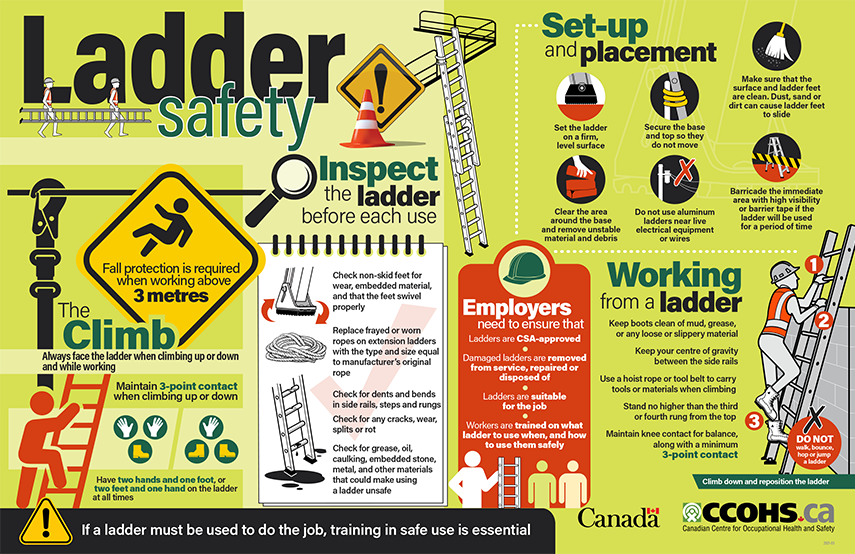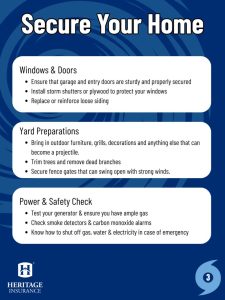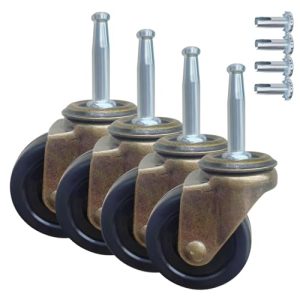Are you sure you know how to use a ladder safely? Whether you’re fixing a light bulb or painting a wall, ladders are tools you rely on every day.
But one wrong step can lead to serious injury. Knowing the safety rules for ladders isn’t just helpful—it could protect you and those around you. Keep reading to discover simple, practical tips that will keep you steady and secure every time you climb.
Your safety matters, and it starts with understanding these essential ladder rules.
Choosing The Right Ladder
Choosing the right ladder is key to staying safe while working at heights. The correct ladder supports your weight and fits the task. It reduces accidents and makes work easier. Knowing types, weight limits, and materials helps pick the best ladder for your job.
Types Of Ladders
Ladders come in many shapes. Each type suits different jobs. Step ladders are good for indoor work. Extension ladders reach high places like roofs. Folding ladders are easy to carry and store. Choose a ladder that fits your task and space.
Weight Capacity Considerations
Every ladder has a weight limit. This includes your body weight plus tools. Check the ladder’s rating before use. Ratings range from light duty to heavy duty. Never use a ladder that can’t hold your weight. Overloading can cause falls and injuries.
Material Differences
Ladders are made from wood, aluminum, or fiberglass. Wood ladders are sturdy but heavy. Aluminum ladders are light and rust-resistant. Fiberglass ladders do not conduct electricity. Pick a material that fits your work environment. For electrical tasks, fiberglass is safest.

Credit: www.ccohs.ca
Inspecting Ladders Before Use
Before you climb any ladder, a quick inspection can save you from serious accidents. Checking your ladder carefully helps catch hidden problems that could cause falls or injuries. Let’s look at how you can inspect your ladder effectively before every use to keep yourself safe.
Checking For Damage
Look closely at every part of your ladder for cracks, bends, or broken rungs. Even a small crack in a side rail can weaken the ladder significantly. Don’t forget to check the feet and locking mechanisms—if they are worn or broken, the ladder won’t support you properly.
Have you ever ignored a tiny scratch only to realize it was the start of a bigger problem? Don’t risk it. If you find any damage, don’t use the ladder until it’s repaired or replaced.
Ensuring Stability
Set your ladder on a flat, firm surface to test its balance. If it wobbles or rocks, it’s unsafe to climb. Check that all locks and braces are fully engaged and secure before stepping up.
Think about how you feel when standing on the ladder—does it seem steady? If not, adjust the placement or find a different ladder. Stability is your first line of defense against falls.
Cleaning And Maintenance
Remove dirt, grease, or any slippery substances from the ladder’s rungs and rails. A clean ladder gives you better grip and reduces chances of slipping. Simple maintenance like tightening bolts and lubricating hinges can extend your ladder’s life.
Have you ever tried climbing a dusty ladder and felt unsure of your footing? Taking a few minutes to clean your ladder before use can make all the difference in confidence and safety.
Proper Ladder Setup
Setting up a ladder correctly is essential for your safety. A poorly positioned ladder can lead to accidents or injuries. Following proper setup guidelines ensures stability and reduces risks.
Safe Placement
Choose a stable, flat surface to place the ladder. Avoid uneven or slippery areas. Ensure the ground is firm to prevent shifting or sinking. Keep the ladder away from doors or busy pathways unless blocked or guarded.
Correct Angle
Position the ladder at a safe angle for stability. Follow the 4-to-1 rule: place the base 1 foot away for every 4 feet of height. This prevents the ladder from leaning too far or standing too upright.
Securing The Ladder
Secure the ladder at the top and bottom to avoid movement. Use ropes, clamps, or stabilizers for extra support. Ensure the ladder’s feet have slip-resistant pads for added grip on the surface.
Climbing And Descending Safely
Climbing and descending a ladder may seem straightforward, but small mistakes can lead to serious accidents. Whether you’re changing a light bulb or working on a construction site, following safety rules can make all the difference. Let’s break down some essential habits you should adopt while using ladders.
Using Both Hands
Always use both hands when climbing or descending a ladder. This ensures you have better balance and control. If you need to carry tools, use a tool belt or hoist them up separately once you’re in position.
Think about the times you’ve tried to carry something heavy or bulky while climbing. It’s easy to lose focus and grip. Keeping your hands free allows you to respond quickly if the ladder shifts or wobbles.
Maintaining Three Points Of Contact
The “three points of contact” rule is your best friend on a ladder. This means two hands and one foot, or two feet and one hand, should always be in contact with the ladder. It’s a simple yet effective way to stay stable.
For example, when reaching for something, ensure your foot or hand stays firmly planted. This reduces the risk of losing your balance. Ask yourself: is that extra second to adjust worth avoiding a potential fall?
Avoiding Overreach
Overreaching is one of the most common causes of ladder accidents. Keep your belt buckle (or center of your body) within the side rails of the ladder. If you can’t reach something comfortably, climb down and reposition the ladder.
It might feel like a hassle, but taking this precaution saves you from tipping the ladder. Remember, the extra effort beats a trip to the emergency room any day.
Working On Ladders
Working on ladders requires careful attention and deliberate actions to ensure your safety. Even small mistakes can lead to falls or injuries. Staying focused and following key safety practices will help you maintain balance and control throughout your task.
Avoiding Sudden Movements
Sudden movements can easily throw off your balance when you’re on a ladder. Instead of reaching quickly or shifting your weight abruptly, move slowly and deliberately. Have you ever felt that momentary loss of balance from a quick turn? That split second can cause a dangerous fall.
Keep your body centered between the ladder rails. If you need to reach farther, climb down and reposition the ladder. This approach might take extra time, but it keeps you secure and prevents accidents.
Keeping Tools Accessible
Carrying tools while climbing is risky and can disrupt your balance. Use a tool belt or a bucket attached to the ladder to keep your hands free. This way, you avoid awkward movements and reduce the risk of dropping tools on yourself or others.
Plan ahead by organizing your tools before climbing. Think about what you need at each step and keep them within easy reach. This small habit saves you from unnecessary trips up and down the ladder, keeping your focus on safety.
Limiting Load
Every ladder has a maximum weight limit that includes your body weight and any tools or materials. Overloading the ladder can cause it to become unstable or even collapse. Have you checked your ladder’s weight rating recently?
Distribute weight evenly and avoid carrying bulky items that make you off-balance. If the task requires heavy equipment, consider using scaffolding or other safer alternatives. Protecting yourself means respecting your ladder’s limits at all times.

Credit: www.linkedin.com
Environmental Hazards
Environmental hazards can turn a simple ladder task into a risky challenge. Recognizing these dangers before you start climbing helps you stay safe and avoid accidents. Pay attention to what’s happening around you—it can make all the difference.
Weather Conditions
Rain, wind, and ice create slippery surfaces that make ladders unstable. Even a light breeze can cause balance issues when you’re high up. Have you ever felt your ladder wobble unexpectedly? That’s a sign to stop and reassess.
Check the weather forecast before you use a ladder outdoors. If the ground is wet or icy, it’s better to wait. Strong winds are especially dangerous—they can push you off balance or blow the ladder over.
Uneven Surfaces
Setting a ladder on uneven or soft ground is asking for trouble. The ladder can tilt or sink, causing falls. Imagine placing a ladder on gravel or grass without checking—this instability is a common cause of accidents.
Always inspect the surface first. Look for firm, level ground. If the area isn’t flat, use ladder levelers or place a sturdy board underneath to create a stable base. Don’t take shortcuts here; your safety depends on it.
Electrical Hazards
Electricity and ladders are a dangerous combination. Metal ladders conduct electricity, and getting too close to power lines can result in serious injury or worse. Think about how close your ladder is to overhead wires before you climb.
Maintain a safe distance—at least 10 feet—from any electrical source. If you must work near power lines, use a ladder made from non-conductive materials like fiberglass. Always assume that power lines are live, even if they look inactive.
Storing And Transporting Ladders
Properly storing and transporting ladders is essential to ensure safety and extend their lifespan. Mishandling ladders can lead to unnecessary wear, damage, or even accidents. By adopting safe practices, you can protect your equipment and yourself.
Safe Storage Practices
Ladders should always be stored in a dry, secure area away from direct sunlight and moisture. Exposure to these elements can weaken the material and compromise safety.
Use wall brackets or racks to keep ladders off the ground. This prevents accidental trips and keeps them from getting dirty or damaged.
If space is tight, consider vertical storage options. Just ensure the ladder is secured to prevent it from tipping over.
Handling During Transport
Transporting ladders safely requires attention to balance and security. Make sure the ladder is tied down securely if you’re using a vehicle. Loose ladders can shift and cause accidents.
Use padded straps or covers to prevent scratches or dents during transport. This also keeps the ladder from damaging your vehicle.
If you’re carrying the ladder by hand, ensure it’s balanced and avoid sudden movements. Always watch out for overhead obstacles like doors and power lines.
Preventing Damage
Protecting your ladder starts with keeping it away from heavy impacts. Dropping or throwing a ladder can cause bends, cracks, or loose parts.
Inspect the ladder regularly for signs of wear. Look for rust, missing screws, or damaged rungs. Address these issues immediately to avoid bigger problems.
Remember, ladders aren’t indestructible. Treat them like a valuable tool, and they’ll serve you well for years to come.

Credit: www.facebook.com
Frequently Asked Questions
What Are The Basic Ladder Safety Rules?
Always inspect the ladder before use. Ensure it’s placed on stable ground. Avoid overreaching and maintain three points of contact.
How Can I Prevent Ladder Slips Or Falls?
Use a ladder with non-slip feet. Secure it properly against a surface. Never use a ladder on uneven ground.
What Is The Correct Way To Climb A Ladder?
Face the ladder while climbing. Keep your hands on the rungs. Avoid carrying heavy items while ascending.
Are There Weight Limits For Ladders?
Yes, ladders have weight ratings. Check the ladder’s label to ensure it supports your weight and any tools.
Conclusion
Safe ladder use depends on following simple, clear rules. Always check the ladder before using it. Make sure it stands firm and on level ground. Climb carefully, facing the ladder and holding on with both hands. Never carry heavy or bulky items while climbing.
Keep your body centered between the side rails. Avoid sudden movements or leaning too far to one side. These steps protect you from falls and injuries. Remember, safety is easy if you stay alert and cautious. Use ladders right, and you can work with confidence and peace of mind.








